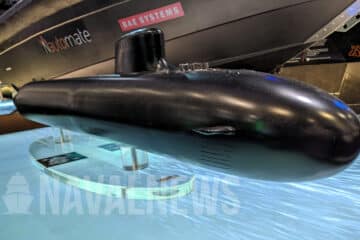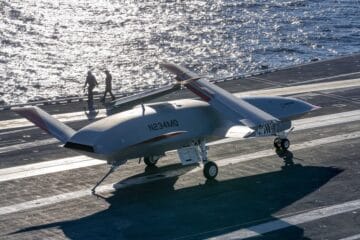BAE Systems press release
The seeker technology enables LRASM to detect and engage specific maritime targets in contested environments with less dependence on traditional navigation systems. The next-generation seeker design reduces overall missile costs.
“We’re committed to providing affordable systems that deliver unmatched capabilities to the U.S. and its allies. We’ve designed efficient seeker systems that are easier to build and test without compromising on performance.”
Bruce Konigsberg, Radio Frequency Sensors product area director at BAE Systems.
Following design improvements conducted under a Diminishing Sources/Affordability contract, BAE Systems is producing next-generation seekers for Lots 4 and 5 that are more capable and easier to produce, with less-complicated manufacturing processes. The next-generation seekers have replaced obsolescent and limited-availability parts, dramatically reducing the system cost.
The LRASM contract will support missiles for the U.S. Navy, U.S. Air Force, and U.S. allies through Foreign Military Sales, as well as research, development, test, and evaluation services.
BAE Systems’ work on the LRASM seeker is conducted at the company’s facilities in Wayne, N.J.; Greenlawn, N.Y.; and Nashua, N.H.
-End-
About AGM-158C LRASM anti-ship missile

LRASM is designed to detect and destroy specific targets within groups of ships by employing advanced technologies that reduce dependence on intelligence, surveillance and reconnaissance platforms, network links and GPS navigation in electronic warfare environments. LRASM will play a significant role in ensuring military access to operate in open ocean/blue waters, owing to its enhanced ability to discriminate and conduct tactical engagements from extended ranges.
The AGM-158C is derived from the Joint Air-to-Surface Standoff Missile Extended Range (JASSM ER). An anti-jam GPS guidance system, radio frequency sensor (RFS), and an infrared sensor support guidance and targeting. Once launched, LRASM guides to an initial point and employs onboard sensors to locate, identify, and provide terminal guidance to the target.
BAE Systems’ long-range sensor and targeting technology enables LRASM to detect and engage protected ships in all weather conditions, day or night, without relying on external intelligence and navigation data.
Armed with a 1,000 Lbs (454 kg) penetrating blast fragmentation warhead, LRASM is low observable and likely has a range comparable with JASSM ER (around 500 nautical miles).
LRASM is designed to meet the needs of U.S. Navy and U.S. Air Force Warfighters in contested environments. The air-launched variant provides an early operational capability for the U.S. Navy’s offensive anti-surface warfare Increment I requirement.
LRASM Achieved EOC with the U.S. Navy’s F/A-18E/F Super Hornet in December 2019 and may soon find its way aboard the B-52 bomber of the U.S. Air Force. The U.S. Navy conducted a live firing of a LRASM during Valiant Shield in September 2020.






